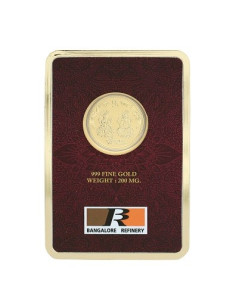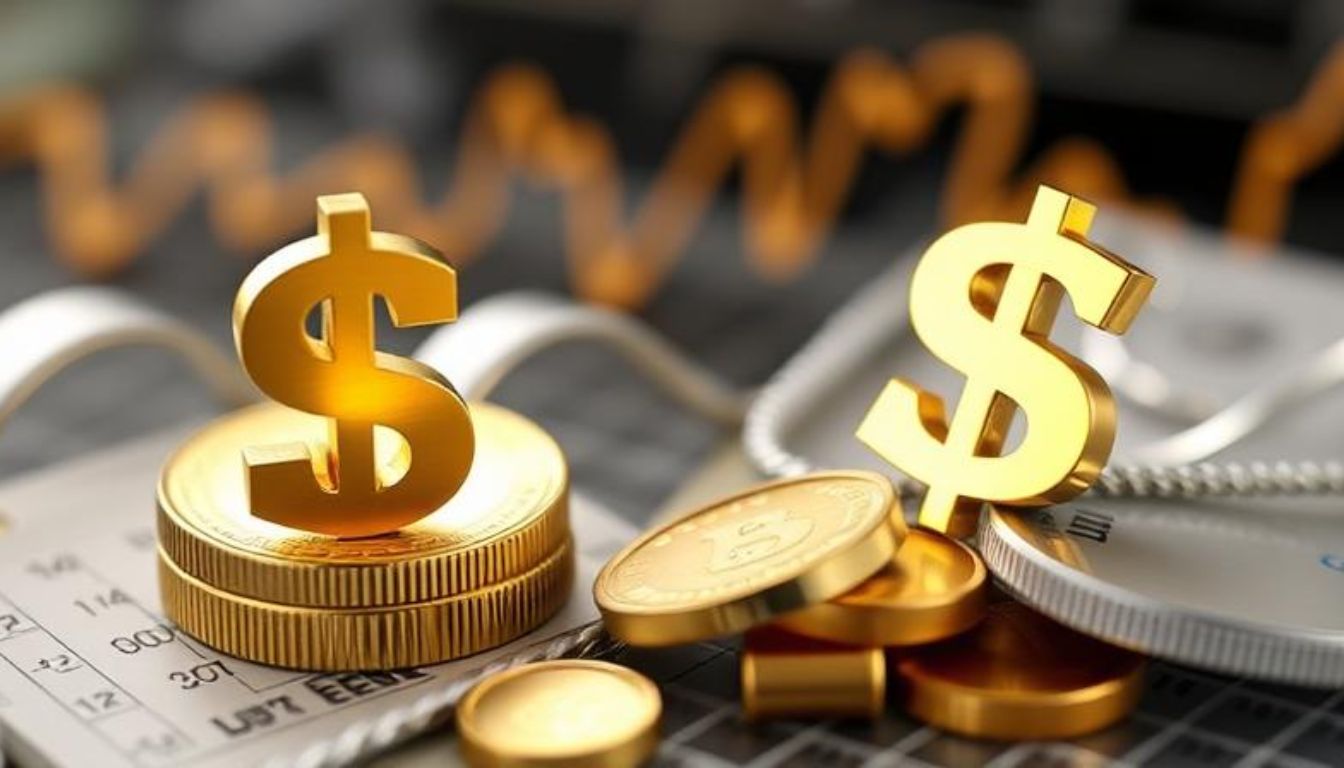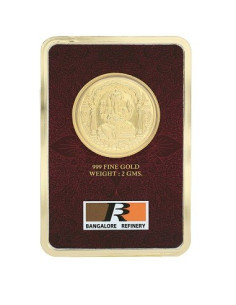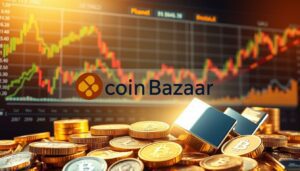Exclusive Deals & Trending Items


Bangalore Refinery Lakshmi Ganesh Gold Foil Coin 200 Milli Gram in 24 Kt 999 Purity Fineness
Shop NowThe link between interest rates and gold prices is intricate. It’s shaped by many global market forces. These forces are too big for any one group, like the Federal Reserve, to control.


So, it’s key to grasp how interest rates and gold value interact. This knowledge helps investors make smart choices in the gold market. Yet, the unpredictability of this connection makes it hard to forecast market movements.
Key Takeaways
- The relationship between interest rates and gold prices is complex and influenced by global market forces.
- Understanding this relationship is crucial for making informed investment decisions.
- The global market forces driving gold prices are beyond the control of any single entity.
- Predicting market trends can be challenging due to the uncertainty surrounding this relationship.
- Investors should stay informed about market dynamics to make better decisions.
The Enduring Appeal of Gold in Indian Economy
Gold has a special place in India, thanks to its history and cultural importance. It’s seen as a symbol of wealth and good luck. For centuries, gold has been a key part of Indian life.


Cultural and Historical Significance of Gold in India
Gold is deeply rooted in Indian culture and heritage. It’s a traditional gift during weddings and festivals, bringing prosperity and luck. Gold is passed down through generations, seen as a vital part of family legacy.
Gold as a Traditional Store of Value
Gold has always been a safe investment for Indians, especially in tough economic times. The practice of saving gold is wise, as it keeps its value. With gold prices changing, it’s seen as a way to protect against inflation and market ups and downs.
The Evolution of Gold Investment in Modern India
Investing in gold has changed in India. While buying physical gold is still popular, Gold ETFs and Sovereign Gold Bonds are now more common. These options let investors in gold without the need for physical storage, making it easier to diversify.
When thinking about investing in gold, knowing the current gold prices is key. Whether you choose physical gold or modern financial tools, staying up-to-date on gold price today helps make better choices.
Understanding Interest Rates and Monetary Policy Mechanics
Central banks’ decisions on interest rates are key in the global economy. They affect many assets, including gold. As an investor, knowing how these decisions are made and their impact is crucial.
How Central Banks Determine Interest Rates
Central banks, like the Reserve Bank of India (RBI), set interest rates based on the economy. They look at inflation, GDP growth, and employment rates. The goal is to balance economic growth with price stability.
For example, when inflation is high, central banks may raise interest rates. This helps control spending and stabilize prices.
The Reserve Bank of India’s Approach to Rate Setting
The RBI uses tools like the repo rate and cash reserve ratio to manage liquidity. The RBI’s monetary policy committee meets regularly to assess economic conditions and make rate decisions. Knowing these decisions can help you predict market trends.
Global Interest Rate Influences on Indian Financial Markets
Indian financial markets are influenced by global events. Interest rate decisions by major central banks, such as the US Federal Reserve, can have a significant impact on Indian markets. This includes effects on the rupee’s value and, consequently, gold prices in India.
US Federal Reserve’s Impact on Global Gold Markets
The US Federal Reserve’s interest rate decisions are watched worldwide. A rate hike can strengthen the US dollar, making gold more expensive for holders of other currencies and potentially depressing gold prices. On the other hand, rate cuts can weaken the dollar and boost gold.
European Central Bank Policies and Their Effects
The European Central Bank (ECB) also plays a crucial role in global monetary policy. The ECB’s decisions on interest rates and quantitative easing can influence global liquidity and, by extension, gold prices. You should keep an eye on ECB announcements for insights into potential market shifts.


By understanding how central banks determine interest rates and the global influences on Indian financial markets, you can make more informed decisions about your gold investments. Historical gold prices and gold price charts can provide valuable insights into how gold has performed during different interest rate environments.
The Fundamental Inverse Relationship Between Interest Rates and Gold Prices
Interest rates and gold prices usually move in opposite directions. This is key for investors to know to make smart choices. In India, gold is a big investment, so understanding this is vital.
The Opportunity Cost Theory Explained
When interest rates go up, holding gold costs more because you could earn interest elsewhere. This makes gold less appealing when rates are high, causing its price to fall. But when rates are low, gold looks better, drawing more investors.
Why Gold Underperforms in High Interest Rate Environments
Gold does not do well when interest rates are high. High rates offer better returns elsewhere, making gold less attractive. So, investors move to interest-bearing assets, reducing gold demand and its price.
Historical Evidence Supporting the Inverse Correlation
History backs up the link between interest rates and gold prices. Let’s dive into the details.
Statistical Analysis of Rate Changes and Gold Price Movements
Studies show a strong link between interest rate changes and gold price movements. When rates rise, gold prices often fall, and vice versa. This is not just a coincidence but a fundamental investment principle.
Notable Exceptions to the Pattern
Despite the usual link, there are times when gold prices don’t follow interest rates. Events like geopolitical crises or supply issues can make gold prices go their own way. For example, during global uncertainty, gold becomes a safe haven, pushing its price up, even with high interest rates.
Knowing these patterns is essential for investors, especially in India, where live gold price and real-time gold prices are important.
Historical Gold Prices During Major Interest Rate Cycles
Looking at gold prices during big interest rate changes can guide investors. The link between interest rates and gold prices is complex. It’s shaped by many economic factors.
The 1980s High Interest Rate Era and Gold Performance
In the 1980s, interest rates were high to fight inflation. Gold prices didn’t move in the opposite direction as expected. They were affected by currency shifts and world events.
Gold prices hit $850 per ounce in early 1980, due to 1970s inflation. As rates went up, gold prices fell. This bear market lasted most of the decade.
The 2008 Financial Crisis: Interest Rate Cuts and Gold Rally
The 2008 crisis changed interest rates and gold prices. When central banks cut rates, gold prices soared. People wanted safe assets, pushing gold to nearly $2,000 per ounce by 2011.
Recent Rate Cycles (2015-Present) and Their Impact on Gold
From 2015, the Fed’s rate hikes had mixed effects on gold. At first, gold prices fell as bonds looked more attractive. But, as global worries grew, gold became a safe haven again.
India-Specific Gold Price Trends During These Periods
In India, gold prices often follow global trends but with local twists. In the 1980s, local demand and supply were more important than global rates.
But, during the 2008 crisis and later, India’s gold prices closely tracked global trends. Prices rose as investors sought safe assets.
| Period | Interest Rate Trend | Global Gold Price Trend | India Gold Price Trend |
|---|---|---|---|
| 1980s | High | Declining | Influenced by local demand |
| 2008-2011 | Cut to near zero | Rising sharply | Rising, following global trend |
| 2015-Present | Gradual increase | Mixed, influenced by global uncertainties | Generally following global trend with local demand influence |
Knowing these historical trends can help you make better gold investment choices. This is especially true when interest rates change.
Current Gold Prices and Real-Time Monitoring in India
For Indian investors, it’s crucial to track the current gold price every day. Gold’s value can change a lot because of global demand, the US dollar’s value, and world politics.
Today’s Gold Price Trends Across Major Indian Markets
The gold price today changes in different Indian cities. This is because of local demand and how goods are moved around. Big cities like Mumbai, Delhi, and Kolkata have their own gold price standards.
- Mumbai: Known for its high demand during festivals, Mumbai’s gold prices can be influenced by local jewelry demand.
- Delhi: As the capital, Delhi’s gold prices are closely watched and can reflect national trends.
- Kolkata: Kolkata’s gold prices can be affected by its unique cultural demand patterns.
Regional Price Variations and Their Causes
Gold prices vary across regions for several reasons. These include transportation costs, local taxes, and demand patterns. It’s important for investors to understand these to make smart choices.
- Transportation costs can cause price differences between cities.
- Local taxes and levies can also impact gold prices.
- Demand patterns during different festivals and seasons can lead to price fluctuations.
Reliable Resources for Tracking Live Gold Prices in India
To stay updated, investors can use digital platforms and financial news websites. These give real-time gold price updates.
Digital Platforms for Price Alerts and Notifications
Many digital platforms offer gold price alerts and notifications. These include:
- Commodity trading websites
- Financial news apps
- Investment tracking apps
Understanding Price Premiums and Discounts
Investors should know about price premiums and discounts. Premiums are extra costs added to gold’s base price. Discounts are when sellers offer less than the base price.
Knowing this can help you make better choices in the gold market.
When Gold Prices Defy Interest Rate Logic: Exceptions to the Rule
Gold prices sometimes ignore the usual rules about interest rates. This happens due to global uncertainties and local demand increases. Knowing these exceptions is key for a full gold price analysis.
Geopolitical Crises as Price Catalysts
Geopolitical tensions can greatly affect gold prices. When there’s political instability or conflict, investors turn to gold. This safe-haven asset’s price goes up, even if interest rates are high. For example, the 2019 Iran-US conflict caused gold prices to rise as investors sought safety.
Supply Constraints in Global Gold Production
Gold production issues can also raise prices. If mining drops due to problems or rules, prices go up. Supply chain disruptions can push gold prices higher.
India’s Festival and Wedding Season Demand Effects
In India, gold demand spikes during festivals and weddings. This local demand can push gold prices up, sometimes not following global trends. Gold’s cultural importance in India means seasonal demand is key to local prices.
These exceptions show how complex gold price dynamics are. They’re influenced by both global and local factors. Understanding these can help you make better gold investment choices.
The Currency Factor: INR Fluctuations and Gold Pricing
It’s important to know how the Indian Rupee and the US dollar affect gold prices in India. The exchange rate between these two currencies plays a big role in the cost of gold for Indian investors.
Rupee-Dollar Relationship and Gold Prices
The value of the US dollar and gold prices are linked in a way. A stronger dollar makes gold more expensive for investors worldwide, including in India. When the Rupee weakens against the dollar, gold becomes pricier for Indian buyers, which might lower demand. On the other hand, a stronger Rupee makes gold cheaper and more appealing.
Currency Depreciation as a Driver for Gold Investment
Currency depreciation can push investors towards gold as a safe asset. When the Rupee falls against the dollar:
- Gold becomes pricier in Rupee terms, but investors might still buy it for its safety.
- The cost of importing gold goes up, which can lead to higher domestic prices.
- Investors might use gold to hedge against further currency depreciation.
Strategic Approaches to Currency-Gold Correlations
To deal with the complex link between currency changes and gold prices, investors can:
- Keep a close eye on exchange rates to predict gold price changes.
- Spread their investments across different assets that do well in various currency scenarios.
- Look into sovereign gold bonds or gold ETFs as alternatives to physical gold.
By grasping the connection between the Rupee-Dollar exchange rate and gold prices, you can make better choices for your gold investments. This can help you take advantage of market chances.
The Triangle Relationship: Inflation, Interest Rates, and Gold Performance
The relationship between inflation, interest rates, and gold is key for investors. Knowing this can help you understand the gold market better. It’s important for making smart investment choices.
Gold’s Effectiveness as an Inflation Hedge in India
Gold is seen as a shield against inflation because its value goes up when prices rise. In India, gold is especially valued for its cultural and historical significance. When inflation is high, people often buy gold to keep their wealth safe.
Key benefits of gold as an inflation hedge include:
- Potential for value appreciation
- Liquidity in the Indian market
- Cultural acceptance as a store of value
Real vs. Nominal Interest Rates: Critical Distinctions for Investors
It’s important to know the difference between real and nominal interest rates. Nominal rates are what you pay or earn when borrowing or lending money. Real rates adjust for inflation, showing the true cost or return.
For example: If the nominal rate is 6% and inflation is 4%, the real rate is 2%. This difference is crucial when looking at gold as an investment. High inflation can reduce the value of fixed-income investments.
India’s Unique Inflation Experience and Gold’s Response
India’s inflation has been shaped by many factors, including economic policies and global prices. Gold prices in India have often risen with inflation, acting as a protective measure.
Case Studies from High Inflation Periods
Looking back, gold prices have gone up during times of high inflation. For example, in the 1970s and early 1980s, gold prices soared. Recently, gold has also served as a hedge during inflationary times.
Comparing Gold with Other Inflation Hedges in India
Gold is not the only option for fighting inflation. Real estate and inflation-indexed bonds also protect against rising prices. Comparing these can help investors choose based on their risk level and goals.
Comparison of inflation hedges:
| Asset | Liquidity | Returns |
|---|---|---|
| Gold | High | Variable |
| Real Estate | Low | Generally High |
| Inflation-Indexed Bonds | Medium | Inflation-Adjusted |
Understanding the link between inflation, interest rates, and gold can lead to better investment choices. It can also help improve your gold price forecast and strategies.
Gold Price Forecasting Techniques Using Interest Rate Projections
Gold price forecasting looks at many indicators, with interest rates being key. Knowing how to predict gold prices can help investors make better choices.
Technical Analysis Methods for Predicting Gold Price Movements
Technical analysis is a common way to guess gold prices. It checks past price charts and patterns to guess future prices. Key technical indicators are moving averages, Relative Strength Index (RSI), and Bollinger Bands.
Investors use these indicators to spot trends and possible changes in gold prices. For example, a golden cross (when the 50-day moving average goes above the 200-day) is seen as a good sign.
Fundamental Analysis Using Interest Rate Futures and Swaps
Fundamental analysis looks at what affects gold prices, like interest rates. Interest rate futures and swaps give clues about future rate changes.
By looking at these tools, investors can see what the market thinks about future interest rates. For example, if futures suggest rate cuts, gold prices might go up.
Expert Forecasts and Their Historical Accuracy
Expert forecasts offer useful views on gold prices. Analysts from top financial places share their views based on market trends and economic signs.
Indian Market Experts’ Perspectives on Gold
Indian experts consider special factors like festival and wedding demand when forecasting gold prices. Their advice is great for those wanting to use local trends.
By mixing technical, fundamental analysis, and expert views, investors get a full picture of gold prices. This helps them make smarter investment choices.
Strategic Gold Investment Timing Based on Interest Rate Cycles
To make the most of gold investments, it’s key to watch the interest rates. Changes in interest rates can greatly affect gold prices. So, timing your investments wisely is crucial.
Dollar-Cost Averaging Strategies for Indian Gold Investors
Dollar-cost averaging is a smart way to invest. It means putting the same amount of money into gold at set times, no matter the market. This method helps Indian gold investors deal with price swings and timing risks.
By investing the same amount regularly, you spread out the cost of gold over time. This can lower the cost per unit. It’s especially good in markets where gold prices change a lot.
Optimal Entry Points During Rate Cut Announcements
When the RBI cuts interest rates, gold prices often go up. This is because lower interest rates make gold more attractive.
Here’s what investors should do:
- Keep an eye on RBI announcements
- Invest soon after rate cuts are announced
- Think about using gold ETFs or Sovereign Gold Bonds for easy entry
Portfolio Allocation Adjustments for Different Rate Environments
The interest rate environment affects how much gold you should invest in. In low-interest-rate times, gold is more appealing. But, high interest rates make gold less attractive.
Adjusting your gold investment based on interest rates can boost your returns. For example, you might put more money into gold when interest rates are low.
Tax-Efficient Gold Investment Approaches in India
Gold investments in India are taxed. Knowing the tax rules helps make better investment choices.
For instance, long-term gains on gold investments are taxed less than short-term gains. Holding gold for over three years can lead to lower taxes.
| Investment Strategy | Low Interest Rate Environment | High Interest Rate Environment |
|---|---|---|
| Dollar-Cost Averaging | Effective for long-term investments | Reduces timing risks |
| Gold Allocation | Increase allocation to gold | Reduce allocation to gold |
| Investment Instruments | Consider gold ETFs or Sovereign Gold Bonds | Evaluate other investment options |
Modern Gold Investment Vehicles in the Interest Rate Context
The world of gold investment has changed, offering many ways to invest. Each option reacts differently to changes in interest rates. As an investor, you can choose from various gold investments, each with its own traits and how it handles rate changes.
Gold ETFs and Their Sensitivity to Interest Rate Changes
Gold ETFs (Exchange-Traded Funds) are popular because they let you invest in gold without needing to store it physically. They are affected by interest rates, as higher rates make other investments more appealing. Yet, they’re still a good choice for keeping up with live gold prices and real-time gold prices.
Sovereign Gold Bonds: Combining Gold Returns with Interest Income
Sovereign Gold Bonds (SGBs) mix gold investment with regular interest. Issued by the government, they’re based on grams of gold. SGBs are less affected by interest rate changes than gold ETFs because they offer a fixed interest rate. This makes them appealing when rates are rising.
Gold Mining Stocks vs. Physical Gold During Rate Fluctuations
Investing in gold mining stocks is another way to get into gold. These stocks can be more unpredictable than physical gold. They’re influenced by production costs and how well the mine is managed. When interest rates change, gold mining stocks can react differently than physical gold, depending on the company’s financial health and efficiency.
Digital Gold Platforms in India: Pros and Cons
Digital gold platforms let you invest in gold online, with options to buy, sell, and store it digitally. The benefits include easy transactions, lower costs than physical gold, and the chance to invest in small amounts. However, there are risks like platform default and not owning physical gold. It’s crucial to pick reliable platforms that show real-time gold prices.
| Investment Vehicle | Sensitivity to Interest Rates | Key Benefits |
|---|---|---|
| Gold ETFs | High | Convenient, tracks live gold prices |
| Sovereign Gold Bonds | Low | Offers fixed interest income |
| Gold Mining Stocks | Variable | Potential for high returns, influenced by company performance |
| Digital Gold | Low | Easy transactions, lower costs |
Developing Your Personal Gold Investment Plan for Various Interest Rate Scenarios
To make the most of your gold investments, having a plan for different interest rates is key. A good investment mix should include gold, adjusting for rate changes. Knowing how to tweak your strategy for different rates is essential.
Strategy for Rising Interest Rate Environments
When interest rates go up, gold might seem less appealing, which could lower its price. To counter this, think about adjusting your gold allocation. You might reduce your gold investment or choose options like gold mining stocks that are less affected by rates. Remember, as Warren Buffett said, “Price is what you pay. Value is what you get.”
Approach for Falling Interest Rate Periods
When rates fall, gold becomes more appealing because its cost goes down. You can take advantage of this by strategically increasing your gold holdings. Investing in gold ETFs or Sovereign Gold Bonds can protect against inflation and currency changes.
“A falling interest rate environment is typically conducive to gold price appreciation,”
notes a leading financial analyst, showing how rates and gold prices move in opposite directions.
Maintaining Balance During Stable Rate Phases
In stable rate times, keeping a balanced gold portfolio is crucial. Diversify your gold investments in physical gold, ETFs, and mutual funds. This way, you manage risk and aim for steady returns.
Incorporating Gold in Your Retirement Planning
Gold is vital in retirement planning, offering protection against inflation and market ups and downs. Allocate a part of your retirement funds to gold, using options like Sovereign Gold Bonds. A strategic allocation to gold can make your retirement portfolio more resilient.
Conclusion: Making Informed Gold Investment Decisions in India’s Dynamic Interest Rate Landscape
Understanding how interest rates and gold prices are connected is key in India’s fast-changing financial scene. You’ve learned that gold prices often move in the opposite direction of interest rates. This is due to many factors like inflation, currency changes, and global economic shifts.
To make smart gold investment choices, keep an eye on interest rate changes and their effect on gold prices. By watching current gold prices and looking at past trends, you can find the best times to invest in gold.
Whether you’re experienced or new to gold investing, knowing about the link between interest rates and gold prices is vital. As India’s financial markets keep changing, staying current with gold price trends and interest rate news is crucial for successful investing.



















